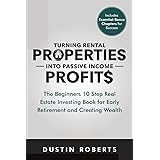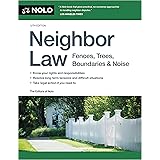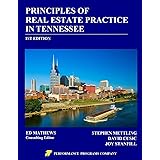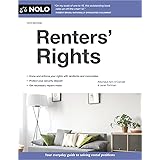For years, a pervasive myth has lingered in the minds of aspiring homeowners: you absolutely need a hefty 20% down payment to buy a house. This belief has unfortunately sidelined countless individuals, convincing them that homeownership is a distant dream, unattainable without a massive savings account. The quick clip above efficiently busts this pervasive myth, and we’re here to dive deeper into why that 20% figure isn’t the finish line you might think it is.
While putting down 20% certainly offers benefits, like avoiding Private Mortgage Insurance (PMI) and often securing a lower monthly mortgage payment, it is far from a mandatory requirement. Many people delay their home-buying journey for years, painstakingly saving for a down payment that is simply not necessary. The truth is, the path to owning your own home is more accessible than you might imagine, with a variety of loan options designed for lower down payments.
Dispelling the 20% Down Payment Myth: Your Options for Buying a House
The notion that a significant home down payment is the only way into the housing market is simply outdated. Today’s lending landscape offers diverse products tailored to different financial situations. It’s crucial to understand these alternatives before you put your homeownership dreams on hold.
Understanding Private Mortgage Insurance (PMI)
Before we explore the low-down-payment options, let’s briefly address PMI. Private Mortgage Insurance protects the lender in case you default on your loan, particularly when your equity in the home is less than 20%. While it adds to your monthly housing expense, it’s also the mechanism that allows lenders to offer mortgages with less than 20% down, making homeownership possible for more people sooner.
Many homeowners dread PMI, but it’s important to view it as a stepping stone. You can often cancel PMI once you reach 20-22% equity in your home, either through consistent payments or an increase in your home’s value. This means it’s not a permanent fixture on your mortgage bill.
Exploring Low and Zero Down Payment Loan Programs
Instead of waiting years to accumulate 20% of a home’s value, which can be hundreds of thousands of dollars in some markets, consider these powerful alternatives:
-
FHA Loans: A Pathway with Just 3.5% Down
The Federal Housing Administration (FHA) loan program is a popular choice for first-time homebuyers and those with less-than-perfect credit. This government-backed loan allows you to purchase a home with a minimum down payment of just 3.5%. This significantly reduces the upfront cash needed, making homeownership a reality for many.
For example, on a $300,000 home, an FHA loan would require a down payment of just $10,500, a much more achievable goal than $60,000. While FHA loans do require mortgage insurance premiums (MIP), which act similarly to PMI, their flexible qualification criteria make them an excellent starting point for many aspiring homeowners.
-
Conventional Loans: As Low As 3% Down
Often perceived as requiring 20% down, conventional loans actually have options that only require as little as 3% down payment. These loans, not backed by the government, are ideal for buyers with good credit scores. With a 3% down payment, a $300,000 home would only require $9,000 upfront. This is a very competitive option, especially for those who qualify.
The key difference is that conventional loans will typically require Private Mortgage Insurance (PMI) if your down payment is less than 20%. However, this PMI can often be removed once you build enough equity in your home, which is a major advantage compared to FHA’s mortgage insurance, which often stays for the life of the loan unless you refinance.
-
VA Loans: 0% Down for Those Who Serve
A phenomenal benefit for eligible service members, veterans, and surviving spouses, VA loans offer the incredible advantage of 0% down payment. These loans are guaranteed by the U.S. Department of Veterans Affairs and come with competitive interest rates and no Private Mortgage Insurance (PMI).
Imagine buying a $300,000 home with absolutely no money down – that’s the power of a VA loan. It’s a tremendous thank you to veterans and a vital program that underscores that a substantial down payment to buy a house isn’t always necessary.
-
USDA Loans: 0% Down for Rural and Suburban Areas
Another powerful 0% down option, USDA loans are backed by the U.S. Department of Agriculture and are designed to promote homeownership in eligible rural and some suburban areas. If you’re looking to purchase a home outside of densely populated urban centers, a USDA loan could be a game-changer.
Like VA loans, USDA loans eliminate the need for an upfront home down payment, making them incredibly attractive. They do have income limits and property location requirements, so it’s essential to check eligibility criteria for both the borrower and the prospective home.
Beyond Down Payments: First-Time Buyer Grants and Programs
The financial assistance doesn’t stop at low-down-payment loans. Many states, counties, and cities offer first-time buyer grants and programs to further assist qualified individuals. These programs can offer:
- Down Payment Assistance: Grants or forgivable loans that help cover your down payment.
- Closing Cost Assistance: Help with the various fees associated with closing on a home.
- Tax Credits: Mortgage Credit Certificates (MCCs) that can reduce your federal income tax liability.
These programs are often layered with FHA, Conventional, VA, or USDA loans, providing an even more accessible route to homeownership. They represent a significant resource that can dramatically lower the initial financial barrier, moving you closer to buying your dream home.
Building Your Smart Plan to Buy a House
As the video emphasizes, what you truly need is not necessarily a huge savings account, but rather a smart plan and the right people guiding you. This involves:
- Credit Health Check: Understand your credit score and take steps to improve it if necessary. A better score can unlock more favorable loan terms.
- Budgeting: Determine what you can realistically afford for a monthly mortgage payment, property taxes, insurance, and potential HOA fees.
- Exploring Loan Options: Work with a knowledgeable mortgage lender who can assess your financial situation and present the best loan programs for you, including those with a low down payment to buy a house.
- Pre-Approval: Get pre-approved for a mortgage. This clarifies your budget and shows sellers you are a serious buyer.
- Finding the Right Realtor: A local real estate agent can help you navigate the market and find homes that fit your budget and needs.
The journey to homeownership is a significant one, but it doesn’t have to be defined by the outdated myth of a mandatory 20% down payment. With these diverse loan options and assistance programs, becoming a homeowner sooner is a very real possibility. Focus on building a smart plan and connecting with experts who can help you achieve your goals.









